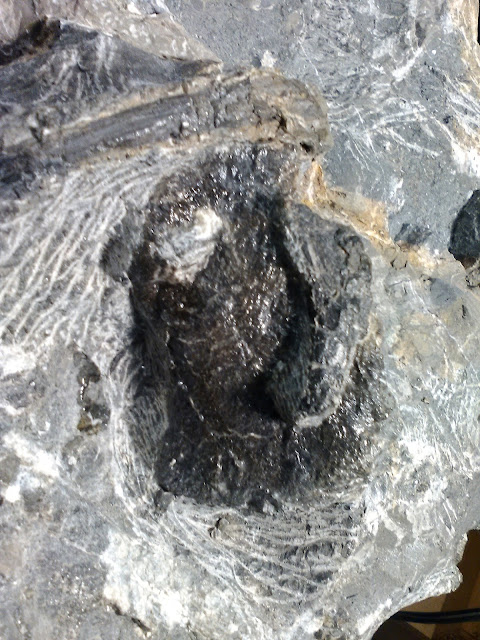Finding new types of bones is getting very rare. After all, I have excavated over 250 bones by now, and these animals don't have that many types of bones. They do have a lot of bones, but most are ribs, gastralia, centrums and neural arches (backbones to us laypeople). So finding a new type of bone is quite excited and unexpected.
I came up with one such bone a couple of weeks ago. What kind could it be? Let's list out the types of bones we haven't found yet: toes, claws, mandible.....
I think it's part of a mandible. Specifically, the back part, where the mandible pivots on the quadrate. It is definitely broken and the broken end seems to be rounded I was hoping for any break to be a suture, but apparently not this time.
So here is the bone in question. It looks pretty robust in this view. The bulge in the middle might be the pivot point for the quadrate, perhaps.
Here is the opposite side. It is moderately robust, but has a very thin end that curves over in a very interesting way. It is not real evident in this picture, but the inner surface has some very deep grooves of unknown purpose.
And here it is from the side. You can see how the intact end curves around in a thin bowl-like structure. This would be good for hooking muscles to, I guess.
So here is a drawing of where I think it fits as a mandible. The thin curved end would be where the muscles to open the jaw would attach, and the bulge would be associated with the quadrate pivot point. The front end is broken off.
And there is still more. There is a quadrate right next to this bone, and a couple of thin bones that are NOT ribs too. Maybe more of the jaw structure? I can certainly hope so. Time will tell.
Speaking of time, I now understand that it will take another year or more until the classification paper is published. I guess this animal is more complicated, more important, and more difficult to classify than we thought! So we must continue to be patient.
Sincerely, Greg Carr

















































